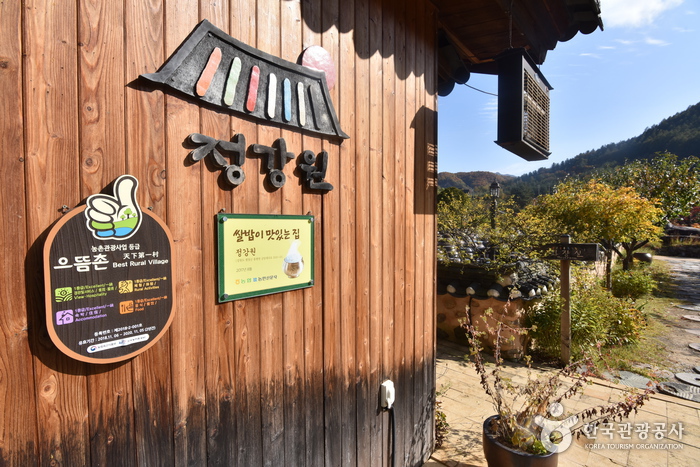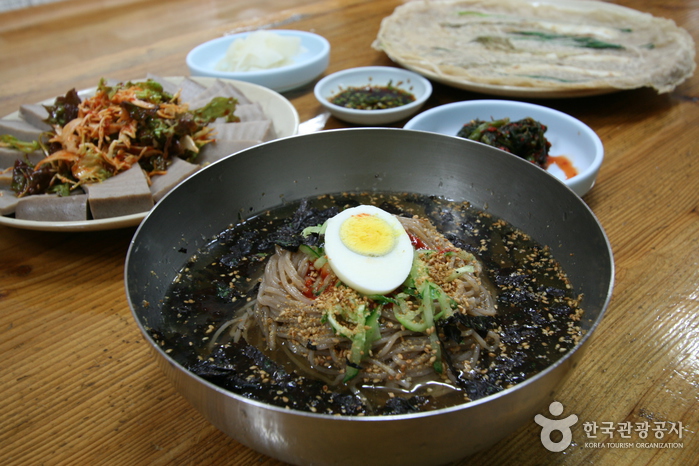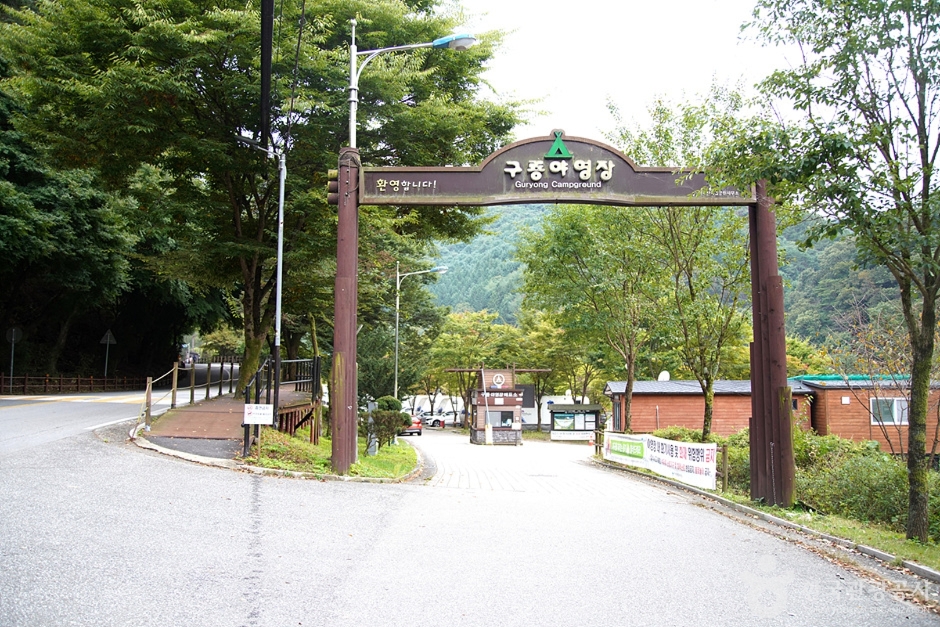Lee Hyo-seok Memorial Hall (이효석 문학관)
17.3Km 2021-08-11
73-25, Hyoseongmunhak-gil, Pyeongchang-gun, Gangwon-do
+82-33-330-2700
Lee Hyo-seok Memorial Hall was opened on September 7, 2002 during the Hyoseok Cultural Festival to celebrate the literary contributions and display artifacts from the life of Lee Hyoseok (pen name Gasan). Many of the artifacts on display came from the Gasan Literature Group but some items were also donated from the children of Lee Hyoseok to commemorate the passing of their father.
Herbnara Farm (허브나라농원)
17.5Km 2024-08-06
225 Heungjeonggyegok-gil, Pyeongchang-gun, Gangwon-do
+82-33-335-2902
Herbnara Farm opened in 1996 as the first herb-themed farm in Korea. The farm was started in a deep valley in Pyeongchang by a couple whose age added up to 100 years. At that time, the farm was just a small plot of land, but has expanded to the current 33,000 ㎡ and is one of Pyeongchang's representative tourist attractions. The farm offers ten themed gardens with over 150 herbs such as lavender and sage. Delicious dishes and drinks made with herbs cultivated on the farm are available at the restaurant and cafe. Visitors can also make herbal soap and candles in the herb classroom, and enjoy cultural events throughout the farm.
Lee Hyo-seok Culture Village (이효석문화마을)
17.6Km 2022-12-29
Wongil-ri, Pyeongchang-gun, Gangwon-do
+82-33-335-9669
Lee Hyo-seok Culture Village is the place where the author Lee Hyo-seok (pen name “Gasan”) was born and raised. The village is also the setting of the author’s novel "When the Buckwheat Blossoms,” one of the most celebrated Korean short stories to date.
In 1990, the village place was designated ‘first national cultural village’ by the Ministry of Culture and Tourism. The village is comprised of the author's birth house, a water mill, Gasan Park, Lee Hyo-seok Memorial Hall, and a buckwheat museum. During the peak of the blossoming season in early fall, the annual Lee Hyo-seok Cultural Festival takes place and visitors can enjoy the beautiful scenery of snow-white fields of buckwheat flowers.
Lee Hyo-seok Cultural Festival commemorates the modern Korean writer and features buckwheat-themed programs. Events include a Hyo-seok essay contest, traditional performances, a costume parade, a photo contest, and "When the Buckwheat Blossoms" plays and related performances. During the festival, visitors can enjoy makguksu (buckwheat noodles) and memil buchim (buckwheat pancakes) and tour the locations that appear in the famous short story.
Hyoseok Cultural Festival (평창효석문화제)
17.8Km 2025-07-10
157 Ihyoseok-gil, Pyeongchang-gun, Gangwon-do
+82-33-335-2323
Korean novelist Lee Hyo-seok is from Pyeongchang, Gangwon State, and is known for his novels that combine stories with the beauty of nature. The Pyeongchang Hyoseok Cultural Festival, held every autumn in Bongpyeong, the setting of his famous work “When the Buckwheat Flowers Bloom,” celebrates his legacy and showcases the region’s beauty. The festival runs a variety of literary programs, such as an essay contest, a poetry event, and bookmaking. In the evening, there are small-scale literary and music performances to add to the romantic charm of the festivities. During the festival, the fields near the village are filled with white buckwheat flowers, creating a spectacular view as though they were waves of white snow rippling in the wind. A key highlight of the festival is capturing memorable photos against the backdrop of the buckwheat fields, which are the most cherished mementos of the event.
◎ The short novel “When the Buckwheat Flowers Bloom,” published in 1936, is a beloved work that captures themes of love and humor set against a buckwheat field. In September, Bongpyeong reaches the peak of its beauty with fields of white buckwheat flowers in full bloom.
Jeonggangwon(정강원 관광농원)
18.0Km 2024-06-20
2010-13 , Geumdanggyegok-ro, Pyeongchang-gun, Gangwon-do
+82-33-333-1011
Jeonggangwon Tourist Farm in Pyeongchang, Gangwon-do, is a tourist complex with a farm and wildflower garden, a food museum, and a Korean restaurant - plus a jangdokdae with hundreds of jars full of pickling and fermenting ingredients. It was founded by food researcher Cho Jung-gang to promote Korean food traditions. Accomodation is in traditional hanok or in condominium-style rooms, and guests have free use of a water park, ping-pong tables and a ball park. Breakfast and dinner are provided free of charge, with set meals and various local specialties. There’s a hanbok wearing experience, and pay-for traditional food-making programs include bibimbap, chilli paste, and rice-cakes.
Hyoseok Culture Village Buckwheat Food Street (효석문화마을 메밀음식거리)
18.0Km 2021-03-11
31, Gipung 3-gil, Pyeongchang-gun, Gangwon-do
+82-33-330-2771
The Hyoseok Culture Village is the place where author Lee Hyo-seok (penname “Gasan”) was born and raised. The village is also the setting of the author’s story "When Buckwheat Flowers Bloom,” one of the most celebrated Korean short stories to date. Since 1999, the Hyoseok Cultural Festival has been held here every September to commemorate the writer. Visitors to the festival can enjoy various foods and events as well as a replica of scenes from the book. For those that are searching for a more tranquil visit, avoid the month of September, when the buckwheat flowers are in full bloom. Don't forget to try all the different memil (buckwheat) dishes offered throughout the area all year round.
Hyundai Buckwheat Noodles (현대막국수)
18.1Km 2025-10-23
17 Dongijangteo-gil, Bongpyeong-myeon, Pyeongchang-gun, Gangwon-do
Buckwheat, a staple in Gangwon State, is finely milled to make the base for Buckwheat Noodles. In Pyeongchang, where buckwheat fields are a common sight, numerous eateries specialize in these noodles. The signature dish here is the Pure Buckwheat Noodles, made exclusively from Korean-grown buckwheat. Its popularity stems from the noodles’ light broth, garnished with vegetables, offering a clean, non-overpowering flavor. For those who prefer a bit of a kick, the Spicy Buckwheat Noodles come with a tangy seasoning, customizable to taste. The accompanying side dishes are equally delightful, featuring items like Buckwheat Pancakes with buckwheat and cabbage, and Buckwheat Crepes stuffed with kimchi filling—each menu item invites one to savor the authentic essence of this cherished grain.
Gajae Wa Gom Pension (가재와곰펜션)
18.1Km 2024-12-19
212-27 , Heungjeonggyegok 4-gil, Pyeongchang-gun, Gangwon-do
+82-33-336-3357
Gajae-Wa-Gom is a log-built pension in the upper Heungjeong Valley in Pyeongchang-gun, Gangwon-do. The guestrooms are cozy cabins, either red-clayed single-storey, or two-sotrey cabins. Gajae-dong and Wa-dong have an ondol 1st floor with a bedroom upstairs, while Gom-dong has a 1st floor bed room with an attic above. The red-clayed cabin, Hwangto, has a furnace-fired ondol. All rooms have terraces where guests can enjoy barbecue meals.There are karaoke rooms and foot volleyball courts outside, and free coffee and tea are provided in the lounge.
Chiaksan National Park (치악산국립공원)
18.6Km 2025-03-15
26, Musoijeom 2-gil, Wonju-si, Gangwon-do
+82-33-740-9900
Chiaksan Mountain has several peaks reaching x_heights of over 1,000 meters, including Namdaebong, Cheonjibong, Hyangnobong, Sambong, and Birobong Peak, the tallest of the peaks at 1,288 meters. Chiaksan National Park, designated in 1984, encompasses a 182.09 ㎢ area with a 14-kilometer trail connecting the peaks from Birobong Peak in the north to Namdaebong Peak in the south.
In addition to these soaring peaks, the park also includes many deep valleys, unique rock formations, waterfalls, and tourist attractions. Some of the more popular destinations are Geumdaegyegok Valley, Taejongdae Rock, Seryeompokpo Falls, and Guryongsa Temple. The park draws in hikers all year round, with bright azaleas in spring, lush forests in summer, vibrant foliage in fall, and a white wonderland in winter.
Chiaksan Guryong Auto Campground (치악산 구룡자동차야영장)
19.4Km 2024-02-16
14 Guryongmaeul-gil, Socho-myeon, Wonju-si, Gangwon-do
Located within Chiaksan Mountain in Wonju, Chiaksan Guryong Auto Campground features sites for both auto camping and caravan camping, as well as a collection of small huts for accommodation. In the summer, the nearby valley is open to visitors, providing an opportunity to enjoy swimming in its natural waters. During the fall, the campground offers the experience of camping against the backdrop of Chiaksan Mountain adorned in vibrant autumn colors.








 English
English
 한국어
한국어 日本語
日本語 中文(简体)
中文(简体) Deutsch
Deutsch Français
Français Español
Español Русский
Русский